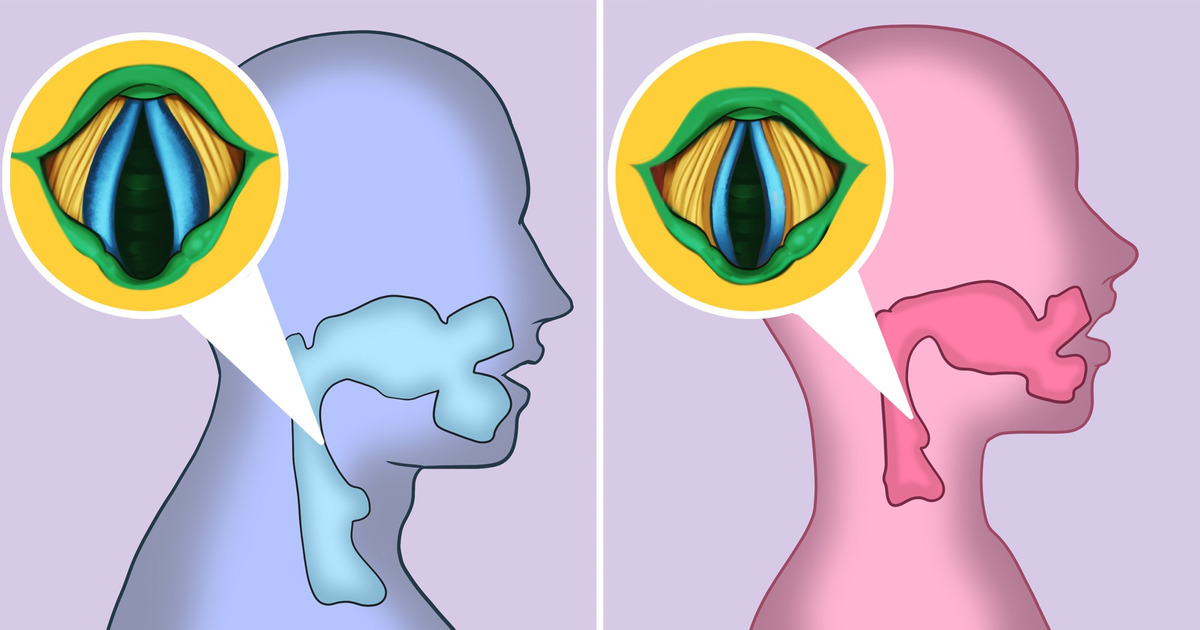Why Men and Women Have Different Voices

Every person has an individual voice but we notice the biggest differences between men’s and women’s voices. At the same time, boys’ and girls’ voices in childhood are very similar but the biggest differences appear in adulthood.
5-Minute Crafts found out why women and men have different voices.
Voice mechanics
The vocal cords are located in the larynx. When air goes through it, the cords start opening and closing, vibrations appear, and we hear a sound. The airflow is generated by the lungs.
When the cords start vibrating, the larynx muscles regulate their length and tension, giving us the necessary pitch.
Several scientific facts
- During singing, vocal cords open and close around 440 times per second.
- Vocal cords are white.
- Whispering is harder for the cords than speaking quietly.
- The female voice is more complex than the male voice.
- Vocal cords protect the airways from suffocation, and prevent food, drinks, and saliva from getting into them.
- The brain reacts to voices differently. Male voices create an activity in the back part of the brain, and female voices activate our brains in the hearing part where it’s easier to decode what we hear. This is probably why female voices sound clearer to us.
- The people who hear voices in their heads, almost always hear male voices. According to scientists, female voices are more complex, so it’s harder for the brain to fake them.
- The voice helps us not only hear people but also determine their appearance, gender, and age. It’s an important tool to identify someone we hear but do not see.
- The famous 12 musical tones that almost all music is based on appeared as a result of people using their voices throughout millions of years of evolution.
Male voice

The male vocal folds are between 17 mm and 25 mm in length. And the average frequency of a male voice is around 125 Hz.
When puberty starts, an explosion of testosterone makes the cords bigger, longer, and thicker. After these changes, a baby voice changes to a low and deep voice because bigger cords make lower sounds. Men, generally speaking, have a larger vocal tract, which essentially gives the resultant voice a lower-sounding timbre.
With age, a man’s larynx changes more than a woman’s, so men’s voices get old earlier.
Female voice

Female vocal cords are shorter and are between 12.5 mm and 17.5 mm long. The average frequency is 210 Hz.
During puberty, testosterone doesn’t affect the female vocal box, so the cords remain high-pitched.
There’s a small area in the female vocal cords that lets more air through. Together with a high pitch, the female voice is hard for humans to hear. For example, for the elderly, it might be hard to even recognize such high-pitched sounds.
Other factors that determine the sound of the voice
Some internal and external factors can affect the natural sound of people’s voices.
For example, when the vocal cords swell, they start rubbing on each other, and the voice becomes hoarse. The following things can cause this effect:
- a cold
- environmental pollution
- bad habits
- a very dry climate
- yelling very loudly
A natural physiological reason for the changing of the voice in adults is old age because when people get old, the load on the voice box is bigger. The tendon and muscles lose their elasticity and the mucus membranes become thinner and drier. All these things make the voice quieter and cause it to tremble a bit.